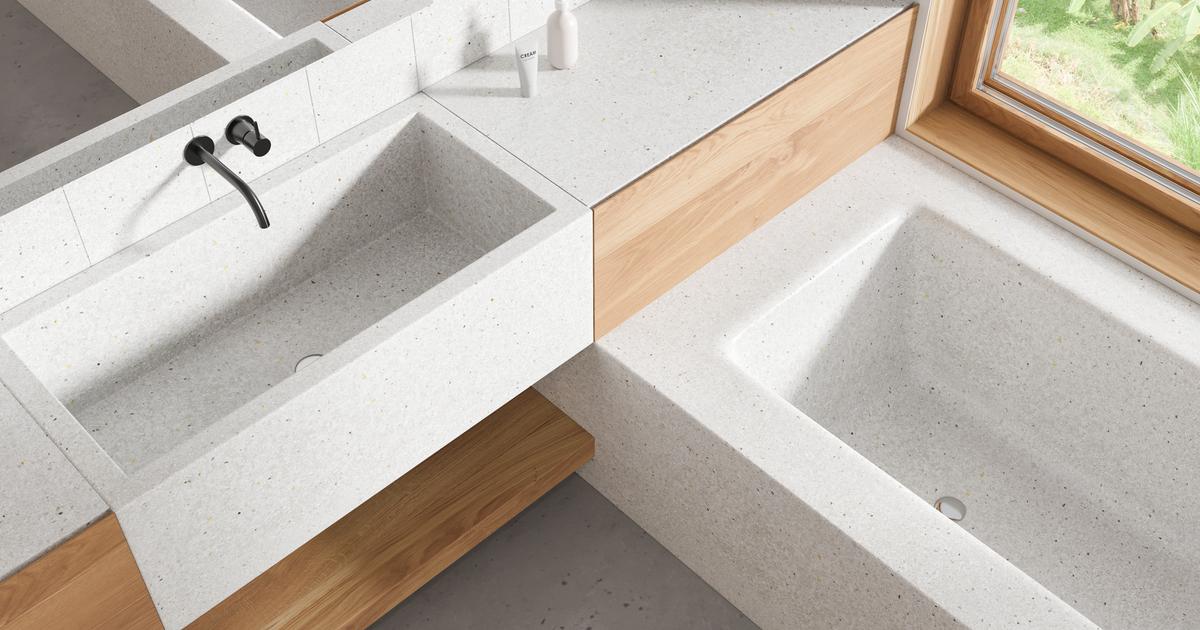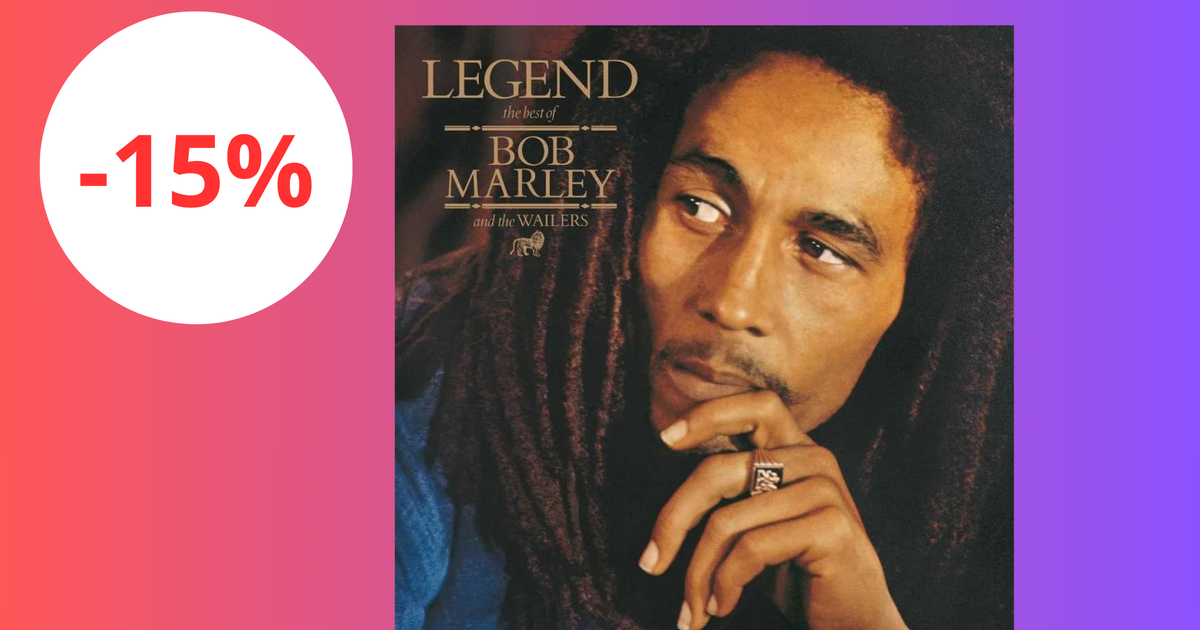Once, about 20 years ago, after a bizarre lunch in Madrid with Julio Iglesias as the guest of honor, someone served champagne at drink time.
Regardless of the blasphemy of taking out a champagne as if it were a cognac or a whiskey,
I am a knave, I am a gentleman,
he took the microphone and sentenced: "Oh, no, I only drink Krug."
Or something like that.
The singer was referring to the bubbly drink created in 1843 by Joseph Krug, a German who had gone to the Champagne region of France to work as an accountant for the Jacquesson brand of sparkling wines.
His philosophy: making wines above the waterline, pure artifacts of liquid pleasure for people with means.
Today, 180 years later, and 23 years after the global luxury leader Louis Vuitton Moët Hennessy acquired the brand for around 170 million euros (LVMH also owns Dom Pérignon, Veuve Clicquot, Moët & Chandon, Ruinart and Mercier), Krug is fully consolidated for what it is: a legend among champagne lovers.
A legend of which Olivier Krug, the sixth generation, now holds the reins.
We traveled to the planet Krug on a freezing day in November, first to Le Mesnil-sur-Oger, where the brand produces a myth of the world of Champagne wines such as the Clos du Mesnil, and then to Reims, where the
maison
is located. Krug.
Tasting at Maison Krug, in Reims.Ed Alcock
It was Rémy and Henri Krug, the fifth generation of the family, who had the idea, in 1979, of making a wine solely from this plot of just 1.8 hectares of Chardonnay grapes located in Le Mesnil-sur-Oger.
We are in the so-called Côte des Blancs, epicenter of the Blanc de Blancs-type champagne or, what is the same, in the kingdom of the Chardonnay grape.
Gypsum soils and a mild microclimate make this place one of the best
terroirs
from France and give their wines a good balance between sugar and acidity, which usually results in wines with ample aging potential.
Le Mesnil has around a thousand inhabitants, the vast majority of whom are dedicated to the champagne industry.
If you walk through its streets, every 20 meters you come across places where small producers in the area sell their champagnes.
Some of them, having too short a production, sell the grapes directly to other brands, including Krug.
The Clos du Mesnil is a tiny vineyard surrounded by a small stone wall whose birth certificate dates back to 1698, as can be verified on a stone plaque written in old French.
The Clos, which was acquired by Krug in 1971, is a special place.
It is divided into five subplots and each of them produces wines with a different personality, something not so unusual if one takes into account that some are 15 years old and others are almost 50. Each plot is harvested individually and according to the sacrosanct precepts of agriculture. Biodynamics, although this was not always the case: Champagne winemakers were not exactly the valedictorians when it came to biodiversity until the recent past.
The cellar master Julie Cavil, during a tasting in the Hall of 400 Wines, at Maison Krug in ReimsEd Alcock
Four decades have passed and the glory of the Clos du Mesnil increases day after day.
But we must do a bit of history and remember that for Paul Krug II, the father of Henry and Rémy Krug, the idea of making a champagne from a single plot, a single grape and a single year was almost a betrayal of the spirit of the
house
, which was (and to a large extent still is) assembling wines from different parts of the Champagne region, different vintages and different grapes (chardonnay, pinot noir and meunier) to achieve glorious results.
Finally, they convinced him and in 1979 the first Clos du Mesnil was created and bottled, which came to be —along with Krug's other monoparcel wine, Clos d'Ambonnay (0.6 hectares of Pinot noir grapes)— something similar to a myth in the universe of Champagne wines… within the reach of according to which pockets (yes, the ones you can imagine, perceptive reader), since a Clos du Mesnil can easily oscillate, depending on the vintage, between 700 and 1,500 euros.
For the Clos d'Ambonnay, the hypothetical buyer (hypothetical refers not only to the need for an almost obscene purchasing power,
This morning we tried the Clos du Mesnil Millésime 2006. It is an amazing mix of acidity, sweetness (hints of honey), freshness and minerality;
It is easy to drink and at the same time has a bodily body that leaves an unexpected aftertaste, and it is not surprising: 12 years of aging in oak barrels contemplate it.
Clos du Mesnil only sees the light of day when the year has been truly exceptional, when the vineyard has been in optimum condition and when the oenologists have decided that it is really worth doing.
When this is the case, no more than 10,000 bottles reach the market, giving priority to Japan, the United States, Italy and the United Kingdom.
In other words: everything is sold, except for a few units that miraculously land in specialized stores or in the cellar of a collector who, after making a reservation, has been able to get hold of them.
A photograph of the current director of Krug, Olivier Krug, holding another of his ancestor Joseph Krug, founder of the prestigious brand. Ed Alcock
In the afternoon, the visit is to the
Maison
Krug, in the center of Reims, the true capital of champagne.
It is the mother house, the home of the Krug family for several generations and a place that is both ultramodern and out of time.
We are on the first level of the winery, built, like the house, between 1870 and 1876. The Krug's idea was to have the production center for their wines in the same place as their residence.
So in the same place that one is sitting on a sofa in the great room of
Maison
Krug, drinking a Grande Cuvée 170th Edition in front of the fireplace, and barely six or seven steps away one finds oneself as if by magic on the stairs that descend towards the cellars, experiencing a sudden change in temperature, degree of humidity and smell.
Until shortly before World War I, the winery only had this one level.
It was, then, just before the Great War —which punished the city of Reims with special viciousness, as would happen two decades later with World War II— when the Krug realized that they lacked space for the aging of some of their wines, which needed long years of reserve, and they undertook the construction of a second level until they reached three kilometers of cellar, which are the ones that still exist today.
Chardonnay grape vineyard at the Clos duMesnil, where champagne has been harvested and produced since 1698. Ed Alcock
There is what those responsible for the brand call The Collection, although they could also call it the Crown Jewels: behind some wrought iron gates and under ashlar stone vaults rests a true testimony of the passage of time and artisan know-how. in the form of dozens of bottles from 1880, 1900, 1904, 1920..., but also 1914, 1915, 1942, 1943...;
that is, champagne for wartime.
And above them, written in white on a black background, this sentence by André Malraux: “There are works that make time pass and others that explain time”.
It is impossible not to think about the contrast between the ghostly air of the place and the hedonistic desire to sneak in and uncork a few of these treasures.
Some of them keep amazing stories.
On a certain occasion, in the early 2000s, a worker inadvertently moved a bottle from the 1915 vintage. The cork popped like a spring.
At that very moment, the managers of the winery, who had actively and passively assured that they would never open these relics, decided to do a blind tasting on the fly.
They called several of their winemakers, tasted the wine.
Some of them were adamant: it was from between 1960 and 1965. They were stunned when they learned that it was from half a century earlier.
Already in 2015, the managers of Krug decided to organize an auction of several lots of this 1915 in New York to commemorate its first
birthday.
.
“It is a historic Millésime, firstly because it was in the middle of World War I and also because at that time there was a woman in charge of the maison, Jeanne Krug”, explains Camille, our guide today at
chez
Krug.
Krug's cellars in Reims.Ed Alcock
Julie Cavil is Krug's chef de
cave
(cellar master), which means one of the most influential figures not only in the world of champagne, but also in that of wines in general at a French and global level.
This ex-publicist turned sommelier and professional taster invites us to a tasting that she calls
From the soloist to the orchestra
, a kind of symphony in three movements around the same year, 2008: Clos du Mesnil 2008, Krug 2008 and Krug Grande Cuvée 164ª Edition.
The Grand Cuvée, where she commands the pinot noir grape over the chardonnay (with a small percentage of meunier added), is the great work of the
maison
, whose oenologists have been working for 170 years to remain faithful to the dream of the founder, Joseph Krug: to produce a champagne each year resulting from the blend of wines from different areas of the region, from different vintages and different grapes with the reserve wines that Krug owns. in his Wine Library in Reims.
In the case of the Grande Cuvée 170th Edition, it is a
coupage
of 195 wines from 12 different vintages, the youngest from 2014 and the oldest from 1998.
Before making their decisions, the tasting committee's team of winemakers and tasters examine nearly 400 wines.
A process of tasting, discussion and selection that takes place in what is known as the Hall of 400 Wines, the space where today's tasting takes place, dominated by an immense wall invaded by bottles of different colors.
“Let's imagine that we are here six months after the 2008 vintage. And that, for six months, every day, at eleven in the morning, we have tasted a multitude of wines from the entire Champagne region of the three varieties, chardonnay, Pinot Noir and Meunier, coming from a hundred winegrowers who make wines that are very different from each other, because what interests us most is precisely that: cultivating the difference”, explains Julie Cavil.
The Clos du Mesnil, in the French town of Le Mesnil-sur-Oger, where the Krug Clos du Mesnil comes from, a legend among champagnes.
ed alcock
The tasting committee is made, according to her, in the image and likeness of the
house itself
.
“We make very charismatic champagnes that express themselves from the first sip, but at the same time offer many things to discover;
that are made of textures, colors, very complex flavors, with a great contrast between maturity and freshness.
And to achieve all of this, it is necessary to have the opinion of people with a lot of personality, sincere people capable of saying things that are wrong.
And to cultivate the difference, because that is our reason for being: to understand why, sometimes, two wines from two small plots barely separated by a path are so different”.
Then will come the Grande Cuvée 160th Edition, the Krug 2006, the Grande Cuvée 162nd Edition and the Krug Rosé 26th Edition.
And then the harsh reality will come, as happens every time a poor mortal has access to immortal concoctions for a while.
We are nothing.
Health!
Blackboard with the existing vintages in the Collection of the Krug cellars in Reims. Ed Alcock
Subscribe to continue reading
Read without limits
Keep reading
I'm already a subscriber














/cloudfront-eu-central-1.images.arcpublishing.com/prisa/GP2ZXWJRROQQUNBAGJPH3WIOVQ.jpg)